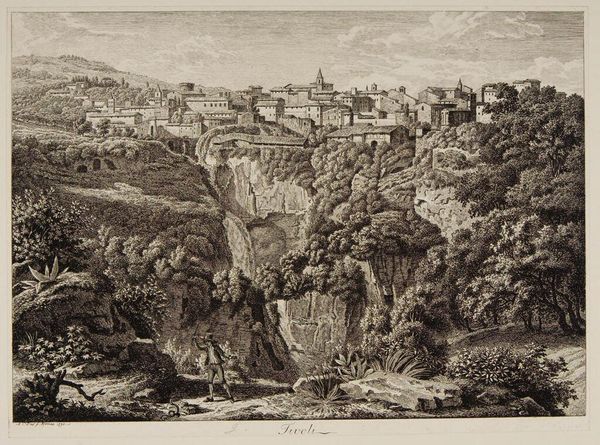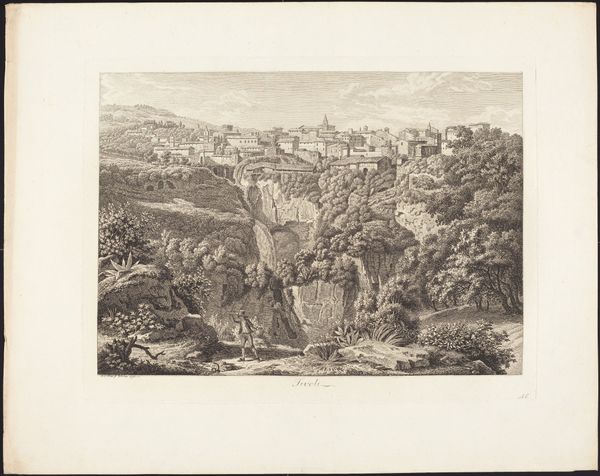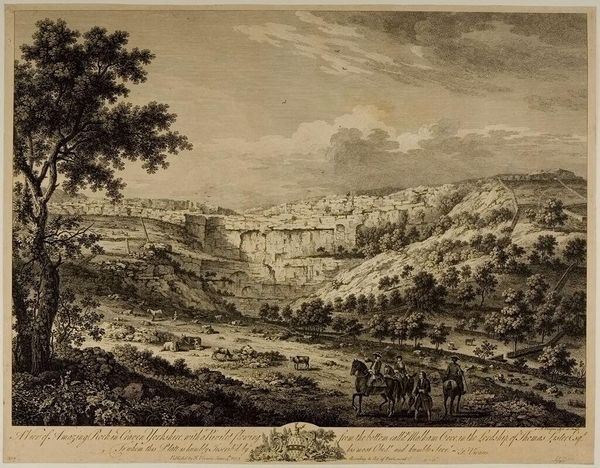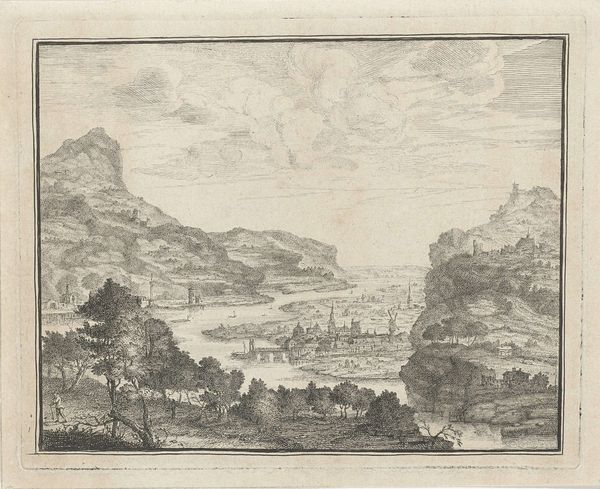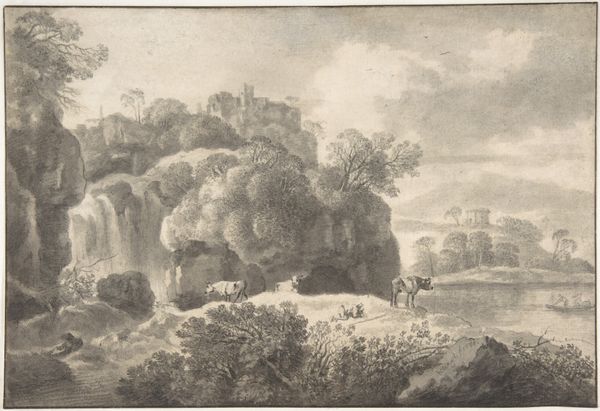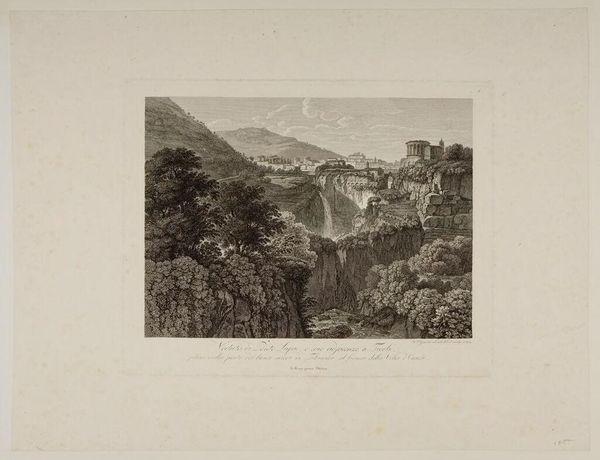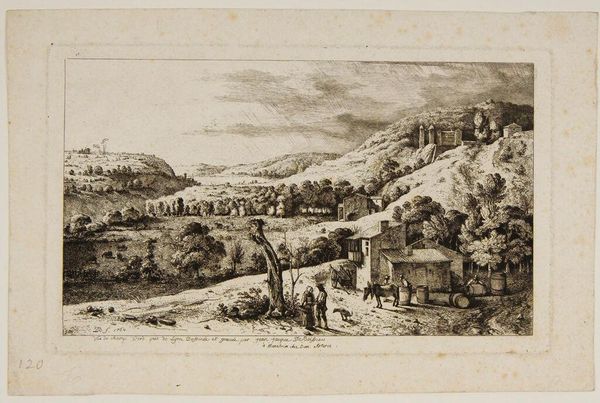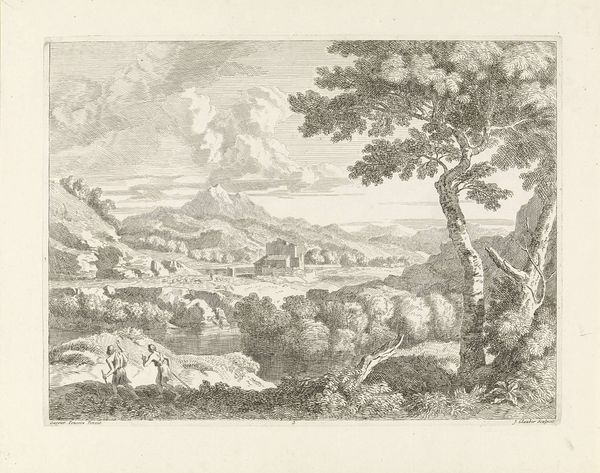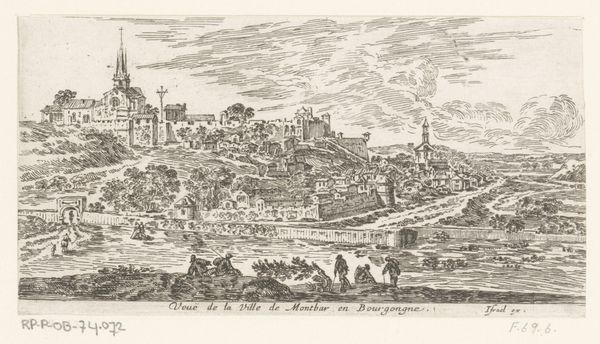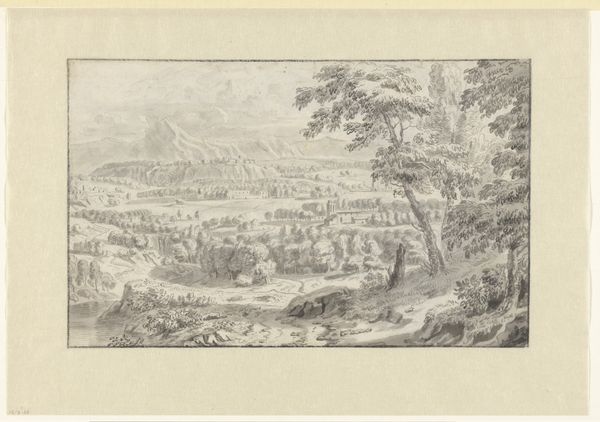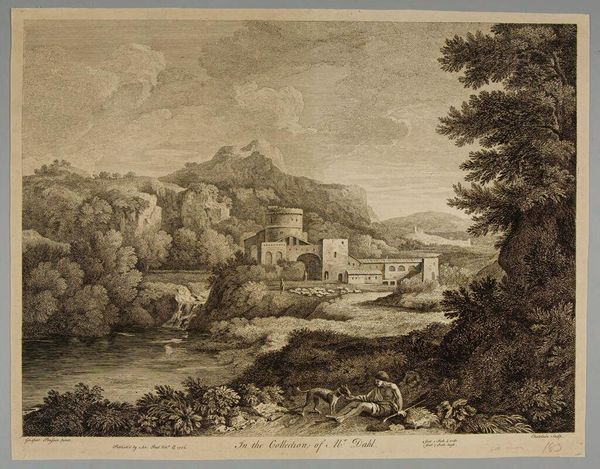
Copyright: CC0 1.0
Editor: This is Albert Christoph Dies' "Tivoli", rendered in what looks like an etching. The scene feels almost theatrical, with the town perched precariously above the falls. What cultural weight does the image of Tivoli carry for you? Curator: The image of Tivoli, particularly its waterfalls and ancient ruins, became a potent symbol during the Grand Tour era. Dies captures more than a landscape; he evokes a dialogue between the classical past and the present. The falls themselves can symbolize the sublime power of nature, contrasting with the ordered architecture. What feelings does that tension evoke in you? Editor: A sense of romantic awe, definitely. The lone figure emphasizes human insignificance against the vastness and history of the scene. Curator: Precisely. The lone figure, a recurring motif in Romantic art, invites viewers to contemplate their place within the grand narrative of history and nature. This image then preserves not just a place, but a feeling. Editor: I see it now, it's like a visual memory, preserved and shared. Thank you for pointing that out!
Comments
No comments
Be the first to comment and join the conversation on the ultimate creative platform.
